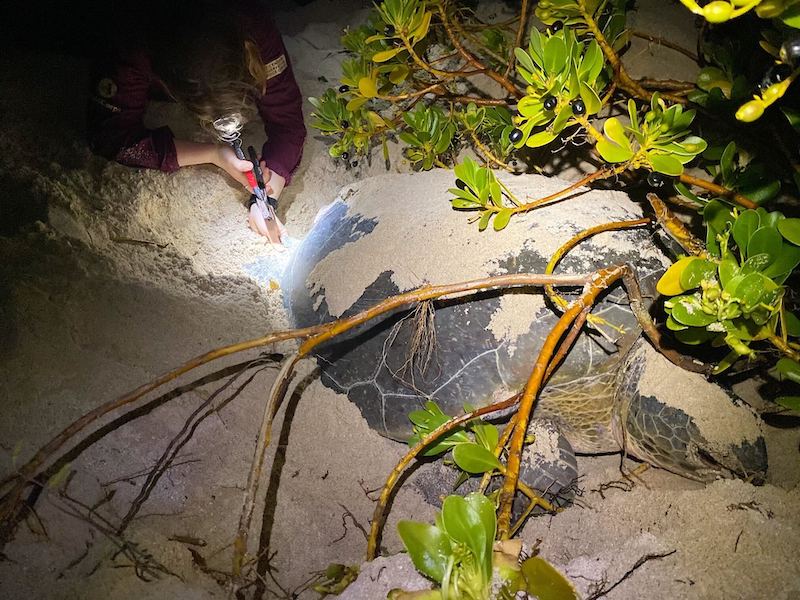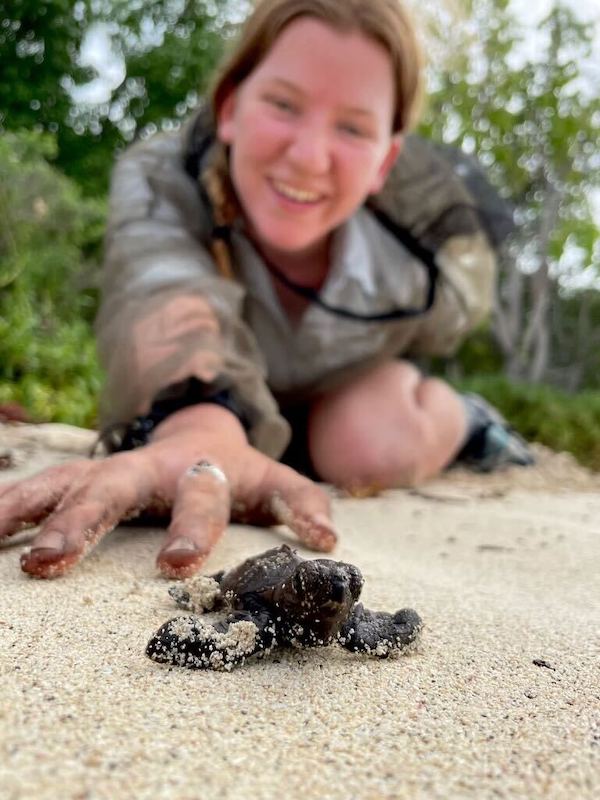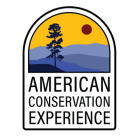Working with Sea Turtles on Buck Island: An Interview with ACE Member Georgia Lattig
Georgia Lattig, EPIC NPS, Buck Island Sea Turtle Research Program
Tell us a bit about yourself and your position. What does an average day look like?
My name is Georgia. I’m currently in my third year of undergraduate at College of the Atlantic in Bar Harbor, ME, studying wildlife ecology and conservation. I grew up with a huge passion for wildlife and especially for reptiles and amphibians. That passion has followed me into my adult life and led to some really cool research opportunities.

What has been the highlight of your season so far? Why does that stick with you?
I have gotten to see some really beautiful things during my time here. One night at Buck Island, I watched a huge silvery ray leap out of the ocean at sunset. A few times when the water was calm, I could look over the side of the boat and catch a glimpse of a turtle gliding gracefully across the sea floor. But I think that the highlight of my season is watching myself grow in confidence as a field researcher. Early on, it was easy for me to panic when finding a sea turtle on my own. I had to be so careful not to scare them that I would get anxious, and my heart would beat so quickly. I had to learn how to be calm and confident around them so that I could treat them with the utmost respect while collecting the data we needed for the project. By the end of the nocturnal field season, I had really found my groove with the whole process and could do a full workup on a turtle with time to spare. I could tell that my impact on the animals was lessened when I stayed calm and confident.
What is something you wish others knew about sea turtles?
I think one of the most incredible things about sea turtles is how resilient they are. The statistics about hatchling survival are bleak: only one in one thousand hatchlings will survive to adulthood. As soon as hatchlings find their way to the water, they are completely on their own, and the whole ocean is against them. Nearly everything wants to eat them! On top of that, most species of sea turtle don’t reach sexual maturity until they are between 15-30 years old. This means that the females who crawl up the beaches of Buck Island have survived against impossible odds and have weathered many years of life in an extreme environment. I have great respect for them and feel humbled that I got to spend my summer alongside them.

Is there anything you learned that was a surprise to you?
I was really amazed by the nesting sea turtles. For one thing, they can just be so massive! Watching an animal that big carry itself up and down the beach in the light of the moon was an incredible experience. I was also surprised by how dexterous their hind flippers are. After a female finds a suitable spot on the beach, she will clear out a large pit in the sand before using her hind flippers to scoop out a deep cylindrical nest chamber. It was crazy to watch their hind flippers scoop out sand and dirt as easily as my hands would. Several times during the season, we had turtles come up that had never been tagged before. We called these turtles “neophytes” because it was their first time nesting on Buck Island and potentially their first time ever nesting. I was blown away by how instinctual the whole process is to them. These animals have no parental care and have never seen the nesting process before, but somehow they know exactly what to do.
What is your favorite NPS site?
I’m really enjoying the sun and waves right now in the Caribbean, but I think I’ll always be a mountain girl at heart. My favorite NPS site is Glacier National Park. I love the wildflowers, the mountain goats, the glacier-formed lakes and the views you earn after a long day of hiking.
Interested in learning more about American Conservation Experience, including our programs – Conservation Crew and Emerging Professionals in Conservation? If so, click here to check out our resources, media, and to apply online.

